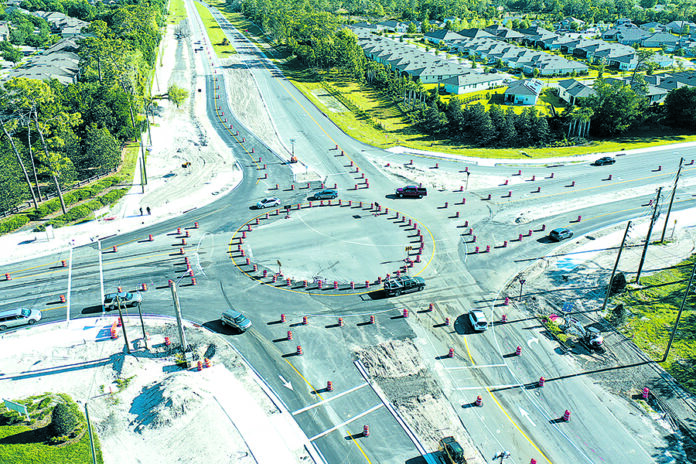
Editor, The Beacon:
I see from the Sept. 15-21, 2022, edition of The Beacon that the roundabout on Orange Camp Road is still a popular subject.
While the consensus seems to be that it is an improvement over the former traffic light, some things still need to be mentioned, to wit:
1. It doesn’t take an engineer or a genius to realize that bicycle lanes and pedestrian crossings don’t mix well with roundabouts. They should not be located in proximity to one another. Is the DOT receiving kickbacks from funeral homes for the suicidal bike lanes?
2. Why is it that all of the theoretical and instructional diagrams published in the papers and by the DOT show nice, smooth-flowing lanes symmetrically converging and diverging into and from the roundabout, yet the actual roundabouts they have constructed show narrowing and twisting lanes as one enters and leaves? Forcing a motorist to turn their wheel twice before entering a roundabout is dangerous, particularly when visibility is poor or the road is wet and, in my opinion, contributes to a higher crash rate.
3. I understand that roundabouts are relatively new and the DOT has a learning curve to go through as well, but for a two-lane roundabout on a heavily trafficked road, they need to be bigger (read: larger diameter). While a greater overall diameter may encourage higher speeds, the increased safety from a smoother traffic flow and more space between vehicles is worth it. It was not like there was a shortage of right of way. They certainly had enough room to design it larger, thus eliminating the narrowing and curving of the entrance paths and eliminating the need for a truck apron.
Hopefully, as time goes on, our DOT will be able to construct these roundabouts in a safer and more functional manner. It might behoove them to send some of their design engineers to Europe to see how they have been building roundabouts successfully since the inception of the automobile.
Don Kanfer
DeLand
Don, you don’t really design roads for a living, do you?
The last one is easiest. Large diameters are dangerous. The US tried rotaries and the large diameters allow speeds that are unsafe and prevent others from entering, resulting in crashes or long queues of traffic. The UK developed the modern roundabout and the US is now building that improved form, and has been since 1990. There are over 8,000 modern roundabouts in the US.
Reverse curves on entry are there to force drivers to recognize that change is coming and slow down. They are most common on higher speed entries.
Modern roundabouts are proven safer than signals, and not only reduce total crashes but reduce the worst kind, crashes where people are injured or killed.
Bike lanes approaching a modern roundabout typically end about 50 feet in advance and cyclist are to either join the slow moving traffic lane, or use the widened sidewalk around the outside. Roundabouts are very safe for pedestrians and cyclist and the splitter islands at each entry are another proven safety countermeasure.
Roundabouts require no power so they always work. If you do crash its much more survivable, they flow more vehicles and have been around forever. They are just new to Deland.